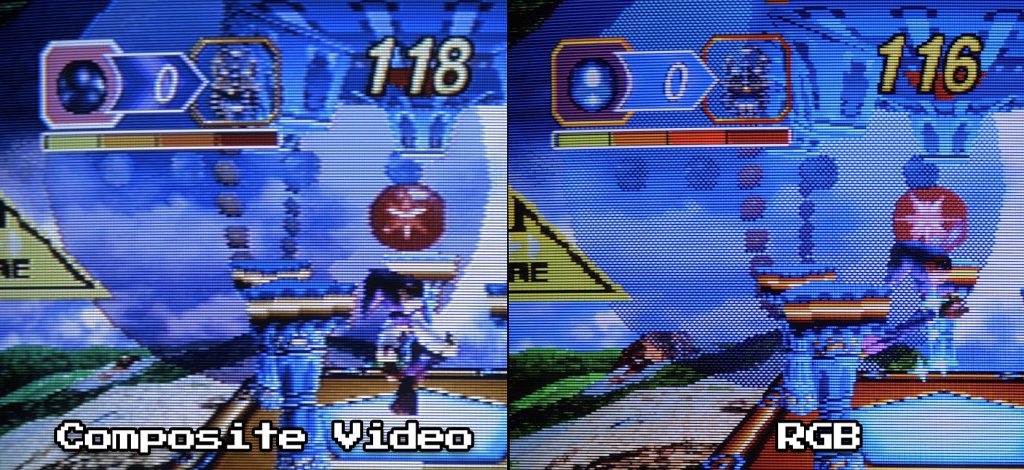Modern Vintage Gamer recently posted a video that describes the dithering technique used in the PlayStation 1. While dithering had been used for quite awhile before the PS1 came around, what set the PS1 apart was that Sony built in support for dithering as part of the main console’s design. As a result, it was used in pretty much every game.
Dithering is an interesting technique, as when using composite video on a CRT (as shown below), it can create some pretty amazing effects; The “cloud” in Sega Saturn’s Nights into Dreams looks perfectly transparent, as the game developers relied on the noisy composite video signal creating so much interference that dots placed close together blend into each other. Alternatively, sharper methods of displaying the signal on a CRT, such as S-Video or RGB don’t blend these textures together and you can still see the original pattern (click for full-sized):

I’m absolutely looking forward to making my own video on dither blending, focusing on how great an effect it was on CRT’s, as well as how terrible the method has aged when trying to play on modern flat-panels. The conclusion I’ve come to is as follows:
- If you’re RGB gaming on a CRT, consider switching to composite video for games that heavily rely on dither blending like Silent Hill, even just for a moment to experience the look the developers intended. For games like Nights that don’t use it as an integral part of the game, maybe stick with the sharpness of RGB and just admire the artwork?
- If you’re gaming on a flat-panel you could apply the same theory, however composite on modern TV’s is usually a terrible idea for a number of reasons. You could consider using the RetroTINK Pro/SCART’s “low-rez mode”, or if you’re lucky enough the MiSTer team may have adaptive composite blending support to your favorite console.
Check out my Saturn RAD2x video to see how the TINK’s filters and the mCable effect dither blending and decide if those are good choices for you as well. And, of course, make sure to watch MVG’s awesome video above to see how this all applies to the PlayStation 1!
